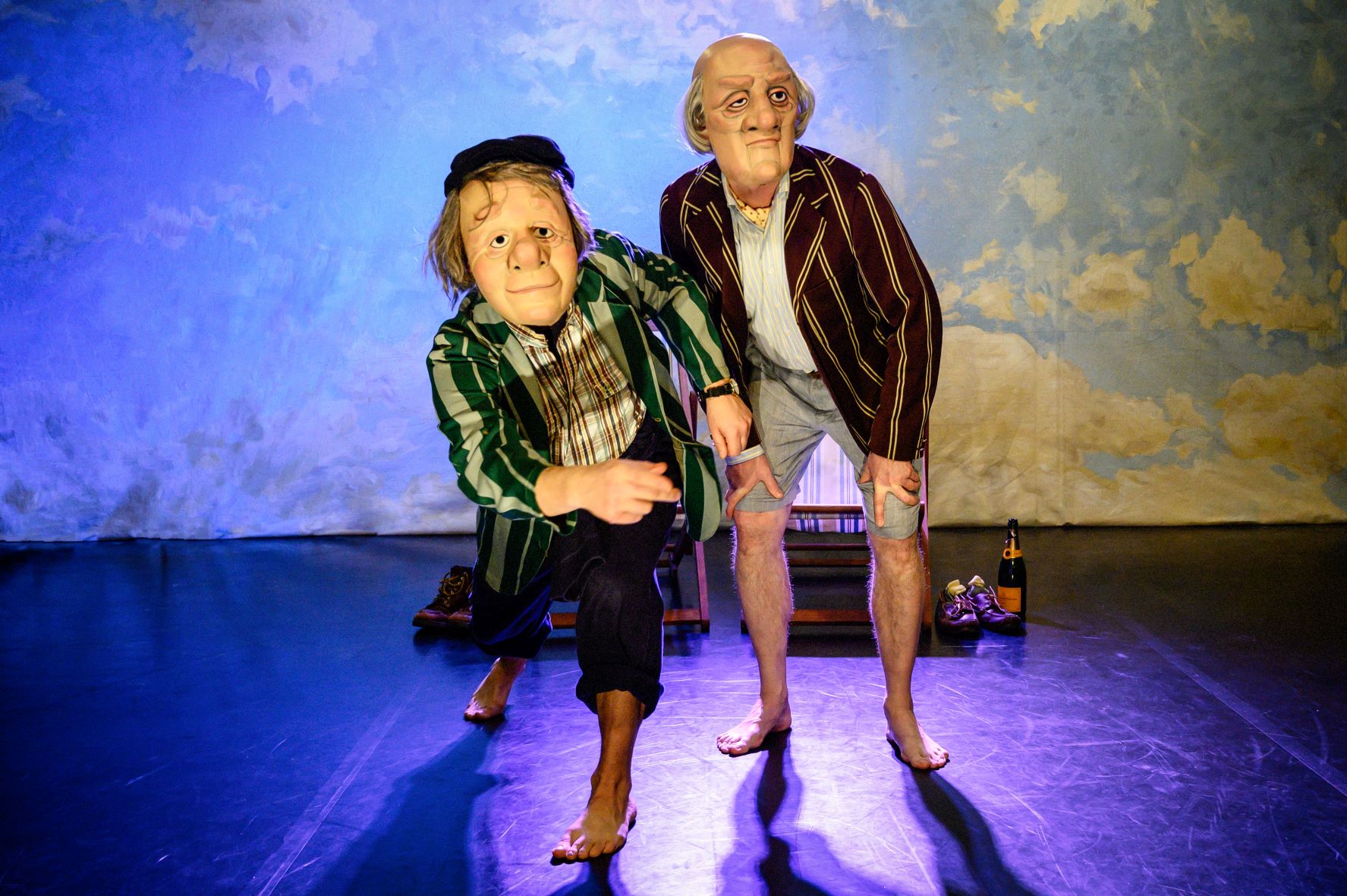
Comment Editors Colette Fountain and Ffion Hâf praise the sensitively blended comedy and pathos of Dead Good, even when the gags did not always match their personal tastes
Perspective 1: Colette Fountain
For my first time seeing a play without dialogue, Dead Good offered something unlike anything I have ever seen. The plot – focused on two men suffering from terminal illness – was told through what I can only describe as a series of vignettes depicting their lives as they near the end. These vignettes were at times incredibly funny, but entirely devastating moments later, helping shape the characters in ways that made you connect to them even without dialogue. [It was] unlike anything I have ever seen
Hearing that a play is focused on terminal illness, you might be inclined to think that it would be incredibly sad. Yet Dead Good was anything but. Throughout, the audience joined in laughing as we watched Bernard (James Greaves) and Bob (Alan Riley) argue over a crossword or skip stones together at the beach. Their friendship was the standout highlight of the show. That isn’t to say that the show was entirely comedic; it managed to depict the pain of terminal illness, while capturing the beauty of human experience.
This is where I feel the show maybe lacked slightly – as someone who isn’t a massive fan of physical comedy, I felt some of the jokes were lost on me. While the inclusion of a joke about Norwich Football Club particularly entertained me (coming from Norfolk I’ve never lived down the legacy of our football team), at times it felt like a more simplified style of comedy, reliant on gags like Bernard walking around the stage in flippers. That isn’t to say that the comedy was bad – it is purely personal preference and the majority of the audience seemed to love it based on how much they were laughing. [The Show] managed to depict the pain of terminal illness, while capturing the beauty of human experience
One of the most impressive things about the show was the use of face masks, something I also had not seen before. These were beautifully made and managed to be incredibly expressive, despite the fact that you couldn’t see the actors’ faces moving. Despite the lack of dialogue, I still felt engaged throughout the duration of the play and never felt that it was dragging, something I feel was aided by the vignette style production.
Usually, when I watch a play, I feel I only pay attention to the dialogue, but the lack of any in Dead Good gave me the opportunity to appreciate areas of theatre I perhaps would not always pay attention to. For example, the integration of video added a lot to the play overall and combined my love for film with my love for theatre. Similarly, I noticed things like the lighting, set design and costume design – all of which were exceptional.
Dead Good is an incredibly important show, especially in a post-COVID-19 society. In Britain, we are so afraid of talking about death and terminal illness which means that this play offers something for us all to relate to. Ultimately, as Bob tells his wife, it is a play about living, something we should all learn to do a little better.
Perspective 2: Ffion Hâf
Dead Good depicts the tale of a heart-warming friendship between palliative care patients Bernard and Bob as they navigate life after a cancer diagnosis. Although the play could have very easily gone down the route of despair and pathos, it instead presents a new outlook on life wherein the men are given one last shot to truly live. Some of the phallic humour may have been a tad overdone at times
Whilst there was no dialogue within the play, the tale was well-crafted in its use of set design, lighting and sound. The props were simplistic, yet effective in that they did exactly what was needed, from the medical cart stocked with an array of alcohol, to the swimming flippers for the beach. My personal favourite use of the set was the video projections used as intervals between scenes as it gave a deeper insight into the characters lives and relationships.
It was a refreshing experience to witness the sensitive topic of death and terminal illness presented in a comedic light that was done respectfully but was still entertaining. Although some of the phallic humour may have been a tad overdone at times, it made viewing somewhat sensitive scenes such as the catheter fitting scenes easier to digest whilst also exemplifying how such procedures are completely normal and should not be stigmatised.
Despite its integration of humour, the pathos felt during the final half of Dead Good was undeniable. Even though their friendship may have been brief, there is a clear sense of companionship and true grief at the end. Additionally, the lack of dialogue meant that every movement from the performers was heightened, giving the audience the time to appreciate their actions more so than in a typical performance. After watching this play, audiences will undeniably feel the importance of living every day to the fullest and valuing the company of those they hold dearest
Though an unlikely friendship, their adventures are punctuated with tender moments of mutual understanding and care as their illnesses quietly tighten their hold on the pair. After watching this play, audiences will undeniably feel the importance of living every day to the fullest and valuing the company of those they hold dearest.
Enjoyed This? Read more from Redbrick Culture here!


Comments